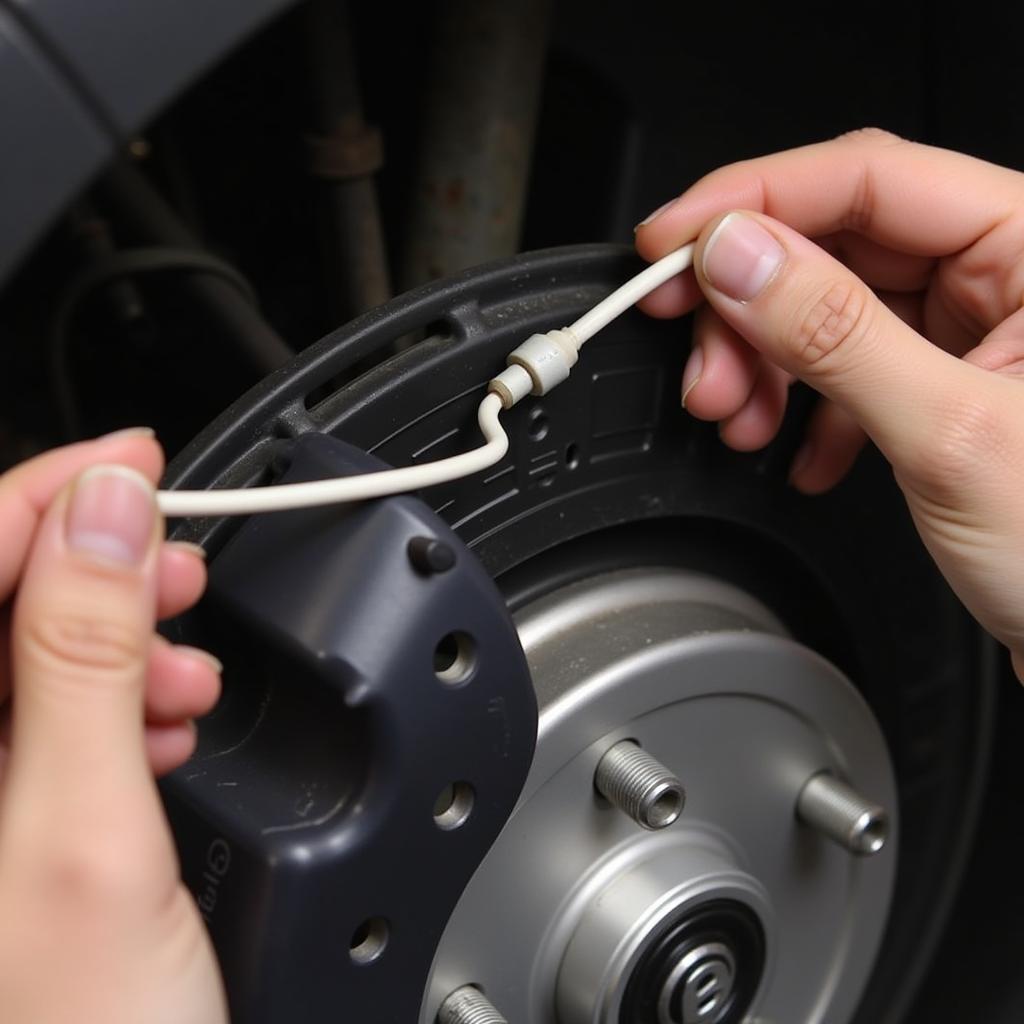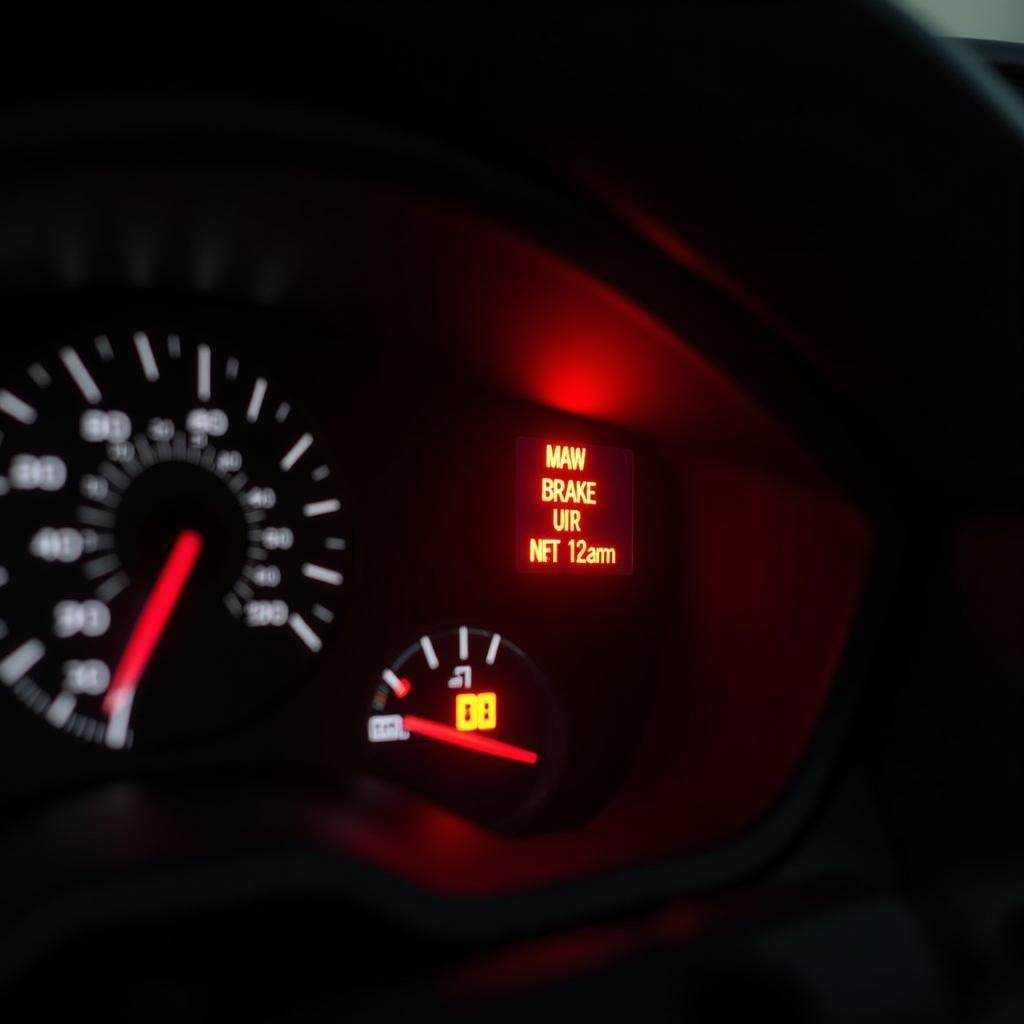The dreaded brake warning light on your 2000 Jeep Cherokee can be a real headache. Understanding the brake warning pressure switch’s role is key to diagnosing and fixing the issue. This comprehensive guide dives into the common causes, troubleshooting steps, and solutions related to the 2000 Jeep Cherokee brake warning pressure switch, empowering you to tackle this problem head-on.
If your brake warning light is illuminated, it’s essential to address the issue promptly. This light often indicates a problem with the brake system, including a potential fault with the brake warning pressure switch. This switch is a vital component responsible for alerting you to low brake fluid levels or a potential malfunction in the hydraulic system. Ignoring this warning could lead to a dangerous situation. More than just an annoyance, a faulty brake system can compromise your safety and the safety of others on the road. This article aims to guide you through understanding and resolving this issue, empowering you to maintain a safe and reliable vehicle. It’s worth noting that sometimes a simple fix, like topping off your brake fluid, can resolve the issue. However, if the light persists, a more thorough investigation is needed.
Understanding the 2000 Jeep Cherokee Brake Warning Pressure Switch
The brake warning pressure switch is a small but crucial part of your Jeep’s braking system. It’s designed to activate the brake warning light on your dashboard when it detects low brake fluid pressure. This could indicate a leak in the system, worn brake pads, or a malfunctioning pressure switch itself. A common misconception is that the brake warning light only signals low brake fluid. While that’s a primary function, it can also indicate more serious problems, such as a failing master cylinder or a leak in the brake lines. The switch is typically located near the master cylinder, making it relatively easy to access for inspection and replacement.
Troubleshooting the Brake Warning Light
Before jumping to conclusions, start by checking your brake fluid level. If it’s low, top it off with the correct type of brake fluid specified in your owner’s manual. However, simply adding fluid isn’t a long-term solution if you have a leak. If the light remains on after topping off the fluid, further diagnostics are necessary. You can start by visually inspecting the brake lines for any signs of leakage. Look for wet spots or drips near the master cylinder, brake calipers, and along the brake lines.
Checking the Brake Warning Pressure Switch
If your brake fluid level is adequate and there are no visible leaks, the brake warning pressure switch itself may be faulty. You can test the switch using a multimeter to check its continuity. A faulty switch will either show no continuity or continuity even when pressure is applied. Replacing the switch is a relatively simple procedure. First, disconnect the electrical connector. Then, use a wrench to remove the old switch and install the new one. Remember to bleed the brake system after replacing the switch to remove any air that may have entered. For more complex brake issues, consulting a qualified mechanic is always the safest approach. They have the specialized tools and knowledge to properly diagnose and repair your brake system.
“A properly functioning brake system is paramount for safety,” says John Miller, a certified automotive technician with over 20 years of experience. “Don’t hesitate to seek professional help if you’re unsure about any aspect of brake repair.”
Replacing the 2000 Jeep Cherokee Brake Warning Pressure Switch
Replacing the brake warning pressure switch is a straightforward process that can often be done at home with basic tools. It involves locating the switch, disconnecting the electrical connector, removing the old switch, installing the new switch, and bleeding the brakes. Having the right tools, like the correct size wrench and a brake bleeding kit, makes the job much easier. Always refer to your vehicle’s repair manual for specific instructions and torque specifications.
“Regular maintenance is key to preventing brake problems,” adds Miller. “Inspecting your brake lines and fluid levels regularly can help you catch potential issues early on.”
If you’re experiencing a brake warning light issue with your Volkswagen Passat, check out this helpful resource: vw passat brake fluid warning. Similarly, this guide can help you locate the brake warning resistor diode assembly on a 1997 Ford F-150: brake warning resistor diode assembly location 1997 f150. Addressing brake issues early can save you time and money in the long run. For further information on brake warnings on a 1997 Ford F-150, you can find helpful information here: 97 ford f150 brake warning. Lastly, this article discusses the brake warning resistor diode assembly in a 1997 F-150: 1997 f150 brake warning resistor diode assembly.
In conclusion, addressing the 2000 Jeep Cherokee brake warning pressure switch is crucial for ensuring your safety on the road. By understanding the switch’s function, troubleshooting methods, and replacement procedures, you can effectively maintain your vehicle’s braking system and avoid potential hazards. Remember to prioritize safety and seek professional help when needed.


